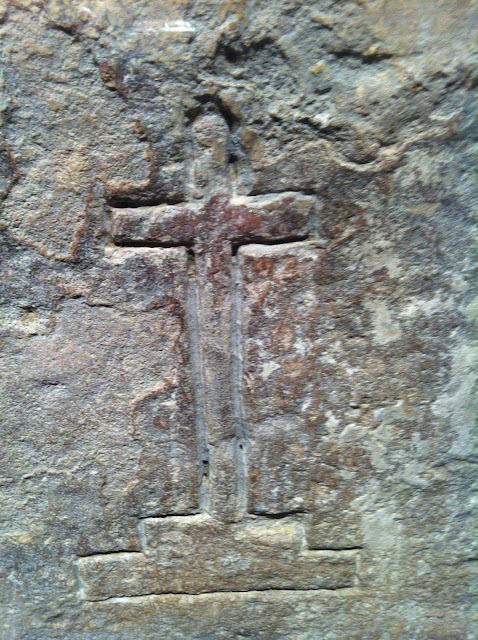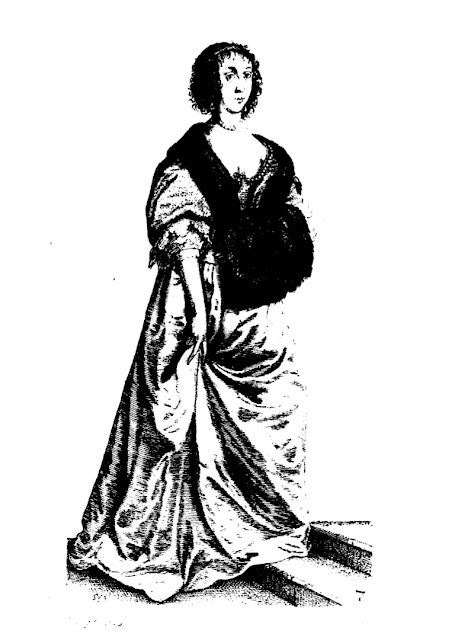Title page Holinshed's Chronicles (1577)
It has long been noted that the Elizabethan historian Ralph Holinshed's
Chronicles served as a source for Shakespeare, particularly in relation to his history plays, as well as
King Lear,
Macbeth, and
Cymbeline. Until the twentieth century,
Chronicles was largely consigned to marginalised scholarly study, however today it is regarded as a 'secular equivalent to John Foxe's
Acts and Monuments, a massive and wide-ranging work of scholarship'. This post explores a little of the history of its production.
Raphael Holinshed (c.1525-1580?) was the son of Ralph Holinshed, or Hollingshead, of Sutton Downes, Cheshire. Some accounts of his life suggest he was educated at Cambridge, but more credible reports indicate he was a 'minister of God's word' and a proponent of the emerging Protestant Church. During the reign of Mary Tudor, when he was in his late twenties and early thirties, he was employed in London at the printing house of the evangelical Reyer Wolfe. Wolfe had employed Holinshed to help him with his 'universal cosmography' - an enormous description of the history and geography of the world complete with maps.
Macbeth battle scene from the 1577 edition of Chronicles
The first edition of
Chronicles of England, Scotland, and Ireland was printed in 1577. 'It formed part of a deliberate movement to elevate the status of England, English letters, and English language through writing and publishing maps, histories, national epics, and theoretical works on English poetry'. In 1547, Wolfe had been issued with a royal privilege to act as the king's printer in Latin, Greek, and Hebrew. This included the exclusive right to print charts and maps which might be useful to king and country.
Wolfe died in 1573, when
Chronicles was still incomplete. His wife Joan died the following year, stipulating in her will that Holinshed had permission to complete, and benefit from, the work. Unfortunately for Holinshed, Wolfe's printing business had been inherited by his son Robert, and his son-in-law, John Hun. They joined with two other men to create a printing consortium with the intention of printing
Chronicles. To publish the volumes, they turned to Henry Bynneman, who had royal privilege to print 'all Dictionaries in all tongues, all Chronicles and histories whatsoever’.
In 1577 the huge two-volume
Chronicles was finally published, with Holinshed on the title page. However, Holinshed appears to have been disappointed with the work. He considered it too limited in scope in comparison with the original 'universal cosmology' envisioned by Wolfe. He blamed the consortium headed by Wolfe's son, as did other contributors, including William Harrison, the author of the ‘Historicall description of the island of Britain’, which prefaced the work. Harrison suggested that the speed with which he had been forced to write his contribution may have led to both errors and omissions.
Chronicles was a great publishing success. It was an expensive book; a copy selling in 1577 for £1.6s (c.£200) would have made it one of the most costly books in a university student's possessions. But its success also suggests how 'informed Elizabethans were coming to place the understanding of their own history alongside the classics as part of the education of a young gentleman preparing for government service.'
It is unclear how much Holinshead himself benefited from sales of the book. In 1578 he was living in Warwickshire, serving as steward to Thomas Burdet, and by 1580 he had died, leaving his books and papers to Burdet.
All hail Makbeth, from the 1577 edition
Chronicles went into a second reprint in 1585-7. This time it was printed by Henry Denham, at the expense of John Harrison, George Bishop, Ralph Newbury, and Thomas Woodcocke. They treated its reprint with tremendous care. While Reyer Wolfe had worked with Holinshed on the 1577 edition, the 1587 edition was placed under the supervision of Abraham Fleming. Fleming acted as general editor, and revised the book, extending the English history to 1586. The 1587 edition of
Chronicles was printed in three volumes. The first comprising Harrison's 'Historical description' and the 'History of England' up to 1066. The second is a description and history of Ireland, revised and extended by John Hooker, as well as the history and description of Scotland by Francis Thynne. The third comprises the History of England by Holinshed, revised by Fleming, with contributions from John Stow.
Title page to the second edition (dated 1586)
Both editions of
Chronicles were extensively censored by the Elizabethan authorities. In 1587, for example, passages pertaining to Scottish history were removed for fear they might damage Anglo-Scottish relations, and
Chronicles' final revision, 'very likely dictated by political developments that followed the completion of the first and second reformations, reflects a careful attempt to cultivate good opinions both at home and abroad, and especially abroad, ahead both of English efforts to negotiate a settlement in the Low Countries and of the expected response to the execution of Mary, queen of Scots. '
Some extant copies escaped censorship, while others reveal varying degrees of alteration. In 1590, James VI demanded a further censoring of the text, but eventually relented, permitting the offending passages to remain. In the eighteenth century, new copies of pages previously censored from
Chronicles, were published, with the intention they should be inserted into those existing copies with omissions. As a result, many of the 1587 copies include eighteenth century alterations. A third edition was published in 1807-8, which restored the censored pages and passages, but reordered the descriptions and histories.
As far as Shakespeare is concerned, my own guess is that he would have been familiar with both editions of
Chronicles. The 1577 copy may have appeared in his school, perhaps in his final year. In all likelihood he owned a 1587 edition, purchased during his years in London. He may have initially borrowed a copy while composing his history plays in the early 1590s, but the cost of buying
Chronicles would not have been such a stretch in the years immediately preceding the composition of
King Lear in 1604-5.
Three weird sisters and Makbeth, also from the 1577 edition
All quotes are from Cyndia Susan Clegg, ‘Holinshed , Raphael (c.1525–1580?)’,
Oxford Dictionary of National Biography, Oxford University Press, 2004; online edn, Jan 2008
Holinshed?








































